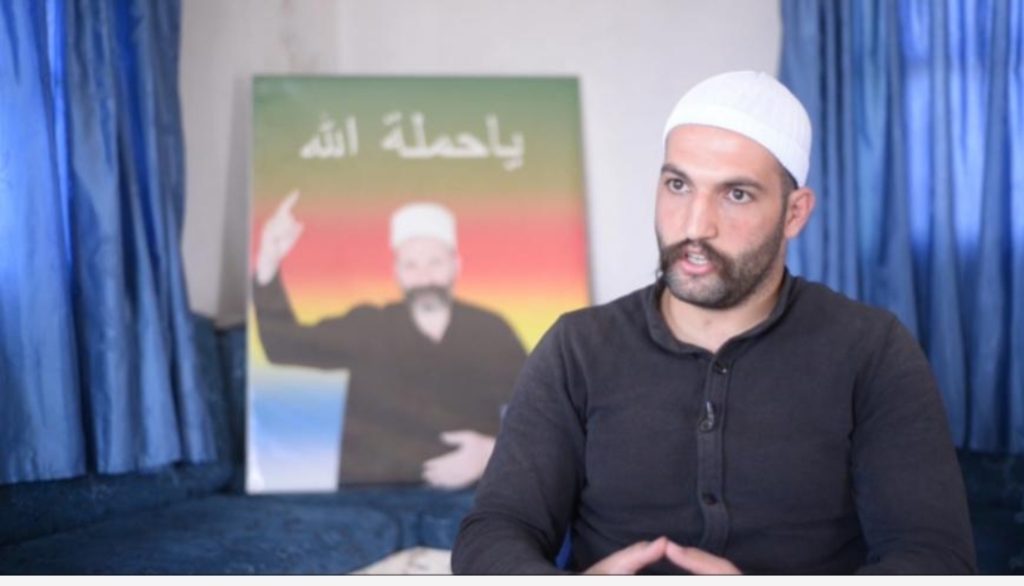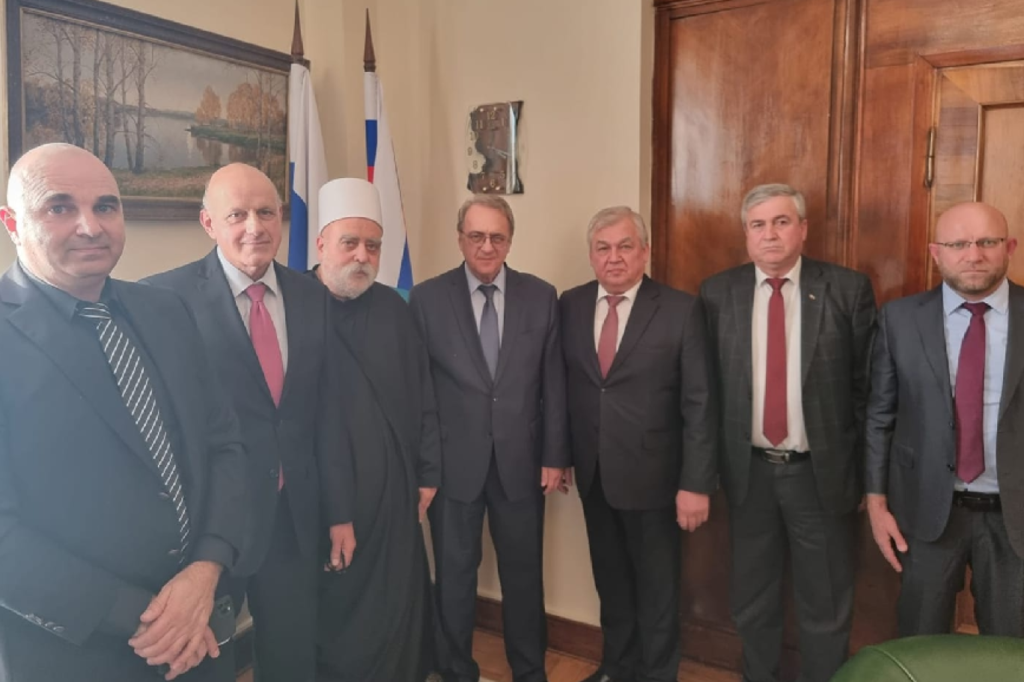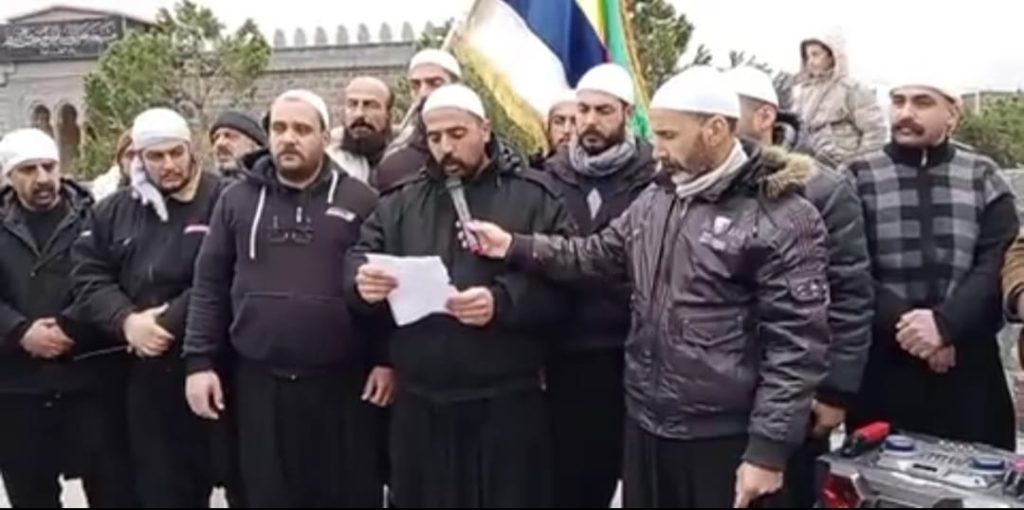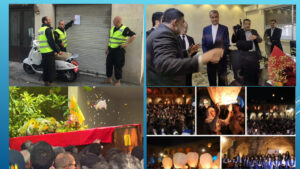The Druze protests against the regime in February 2022 in the al-Swaida province appear to be an accidental and one-time outbreak, but the truth is different. These demonstrations are part of a long process that originated in the Syrian civil war.
During the Syrian civil war, the Druze sided with the Syrian regime in general, while at the same time, they decided not to intervene in the fighting while also refraining from serving in the Syrian Army. The Druze intervened in the fighting only when there was a threat to their territories in the areas of Jabal al-Druze (Mount Druze, also known as Jabal al-Arab), Sweida, Damascus (Jaramana), Jabal al-Summaq near Idlib and in the villages at the foot of the Hermon (Jabal al-Sheikh). Of course, Druze took a more active role in the fighting and even took part in hostile terrorist activity against Israel, but most of the Druze decided to arm themselves and defend themselves within their communities. Especially in light of their distrust in the Syrian Army and its ability to prevent ISIS and the Al-Nusra Front from attacking Druze villages. At the same time, they kept an open dialogue with the moderate rebel groups in the Horan while preventing as much as possible from entering into a sectarian war.
The protests in Sweida began in mid-2020 when the quality and living conditions began deteriorating significantly due to the dire economic situation, the decline of the Syrian pound, the high unemployment rate, severe fires in agricultural areas that the regime did not help extinguish, and the increase in prices. Most of the protesters belonged to the middle and lower classes, students, and young people at the beginning of their lives. The demonstrations bore only a socioeconomic nature calling for life with dignity at the outset. But later, the protests began to call for the condemnation of the regime and even called for its overthrow. Furthermore, a feeling of insecurity was added in light of attacks perpetrated by Syrian Army soldiers originally from SweidaProvince serving in Daraa and the abduction of civilians for ransom, robberies, and theft. The demonstrations took place in the entire province and not only in the city of Sweida. Allegations were made accusing the regime of inciting the different factions against each other. Several demonstrators arrested following the protests were released a short time later.[1]
One of the major leaders of the protests is Laith al- Balous, son of Sheikh Wahid al-Balous (1965-2015), founder of the “Harakat Rijal al-Karama” (Men of Dignity Movement). The movement was established during the civil war to protect the Druze community, maintain contact with moderate rebel groups, oppose involvement in the fighting, and oppose the involvement of Hezbollah and Iran. Al-Sheikh Wahid al-Balous was assassinated most likely by the Syrian regime with the help of Hezbollah with an IED in September 2015 because of the power he had gained and his desire to create a kind of Druze autonomy.


Laith al- Balous established the “Al-Sheikh al-Karama“ forces, which parted from the “Harakat Rijal al-Karama “ movement after he was ousted from the movement founded by his father-Wahid al- Balous. In a video published in August 2021, he attacked the Syrian regime, accusing it of corruption and of being an oppressing tyrant, incapable of protecting the civilians of Sweida, and not fulfilling its obligations and their most basic needs. Leith stressed that there is no need for the regime to exist as it is not trusted, that the region can handle its own affairs without the management of the regime, and that they will not give up their dignity. Leith spoke out against Iran and Hezbollah’s involvement in Syria in general and in Sweida’s province. This involvement led to a brotherly war between religions and neighbors when before, there was never a problem or friction, or differences between the people of Sweida and the people of Daraa or Al-Horan.
Moreover, the entering of Iran and Hezbollah into the area led to drug trafficking by locals loyal to them. Leith spoke out against the converting to Shi’ism and against the Iranian ideology of the Shiite Crescent, making it clear that he blamed Hezbollah and Iran for the assassination of his father. At the same time, he declared that he is against the dividing of Syria, that he is a patriot, that Syria is his homeland, and that he hopes for better days.[2]
In practice, Mount Druze enjoys a kind of governmental autonomy, with the movement (Rijal al-Karama), founded by Sheikh al-Balous (the father), still existing and hostile to the regime. The movement’s current leader, Sheikh Yahya al-Hajjar, supported the demonstrations, seeking the rights and dignity of the Druze on the mountain, but making it clear that they were against the division of Syria.
Another organization is “Hizb al-Luaa al-Suri“ (Syrian Brigade Party), established in 2018, headed by Malik Abu al-Khair, a Druze journalist from Sweida who lives in France. The organization’s goal is to protect the Druze with the support of western countries. To this end, Abu al-Khair contacted Samer al-Hakim of Sweida, who established an armed militia called the “Kawa Makafah al-Arhab” (The Counterterrorism Force), which constitutes a kind of military force. They have established an independent defense and management force in Swaida, priding on receiving support from outside Syria.[3]
The Syrian regime did not act to calm down the situation. Sweida province is ruled by local militias, some are supported by the regime, and some are not. These are power struggles as the Syrian regime tries to regain control of the province.
In April 2021, the governor of Sweida province, Humam Sadeq Debyyat (who was previously governor of Quneitra Province), was interviewed, noting the province’s importance in all types of agricultural crops and in the implementation of solar energy projects. Regarding the fuel and electricity shortage in Sweida, it appeared that he did not know how to meet the needs of the residents and his answers were vague and uncertain.[4]
President Assad replaced Debyyat in December 2021 with Namir Makhlouf (President Assad’s mother’s cousin). He worked with dignitaries of the Druze community, discussing the issue of personal and general security in the province in light of the lack of presence of the regime’s security services and the gaining of control by various armed groups. There have been numerous allegations against Makhlouf that he had been bearing a hard line towards the residents of Sweida, including allowing the injuring and killing of dissidents. He even tried to involve the Russians to reach a settlement in the region.[5]
At the same time, Bashar al-Assad tried to impose his authority on the province, with security reinforcements sent to the area to deal with the demonstrations and arrest the province’s militias. There was also an allegation that Iranian militias arrived together with the Syrian Army in Sweida city center.[6] The Syrian regime’s policy is containment, alongside a military threat of placing more security forces in the Sweida province.
In early February 2022, the Syrian government decided to cut government support and remove the subsidies from several basic products, triggering the recent protests in Sweida province, which included blocking and cutting off major roads. The demonstrations (which were attended not only by Druze) included slogans condemning the Assad regime, calling it a corrupt regime, calling out against the starvation policy against Syrians and against the mobilization of the Syrian Army, and allegations against the Russians, Iranians, and Hezbollah.
The accusation against the demonstrators that they were Israeli collaborators was met with anger and renunciation, and the response was that the person accusing them was himself a traitor. The demonstrators noted that the protest exists because of the economic situation, and they are only pursuing their legal rights, especially in light of their standing with the Syrian regime throughout the civil war, including the sacrifice of their sons.
A distinction must be made between the non-Druze residents of the province and its Druze residents. The Druze continue their refusal to enlist into the Army, and there is an understanding that no Druze citizen in the area will be arrested at checkpoints demanding his enlistment. The thwarting of drug smuggling and criminal activity on the Syrian-Jordanian border is also a key demand of the protesters as the smugglers receive protection from the Syrian Army, Hezbollah, and Iran (we have addressed this quite a bit in our publication over the years).
The protests were backed and supported by the Druze clerics. The spiritual Sheikh of the Druze community in Syria, Hikmat al-Hajari, supported the protest and made it clear that peaceful demonstration is a legitimate right for citizens who demand their rights to improve their living conditions and personal safety and to fight corruption while upholding the law and state institutions. The Sheikh stressed that the protest regards the economic situation and the citizens’ dignity.[7]
The visit to Moscow of Sheikh Mowafaq Tarif, the Druze community Sheikh in Israel, in mid-February 2022, was intended to bring about the protection of the Druze in Syria from Iranian involvement, as well as from the harassment of the Syrian regime and attempts to suppress the demonstrations due to the economic situation. In addition, the Sheikh worked with the Russians to influence the Syrian regime to allow the entry of humanitarian aid from Israel into Sweida (via Jordan or through the Quneitra crossing). In light of the war between Russia and Ukraine, Russia’s attention to the issue is probably very sparse.[8]

As of now, the protests in Al-Sweida continue. On February 27, 2022, the protest leaders declared that the demonstrations would continue until the regime met their demands. In demands presented by the protest leaders known as the “National Popular Movement In Peaceful Ways ” (originally – Al-Haraq al-Shaabi al-Watani al-Salami), they made it clear that they wanted a moderate and lawful democratic state regardless of political or sectarian discrimination based on UN Resolution 2254 of December 2015, The return of money stolen from state coffers, implementing citizens’ rights and satisfying their basic needs at subsidized prices, changing the real estate and land laws and preventing the transformation of the Sweida area into a center for smuggling drugs into the neighboring countries.
There are unsettling undercurrents in the Jabal al-Druze region. On the one hand, there is agreement on accepting the authority of the central Syrian regime, but at the same time, the Druze population insists on the protection of the community, its dignity, and demands. In our assessment, the protest will not be silenced by brute force since the Druze community is very important to the Syrian regime. The regime will think twice before initiating a military operation against the Druze, but at the same time, will work to prevent any situation in which armed groups attack Syrian security forces.
Hezbollah has a clear interest in keeping the peace on Mount Druze. Any attack on Druze groups on mount Druze directly affects Hezbollah-Druze relations in Lebanon. Nowadays, ahead of the Lebanese elections, this is of critical significance, especially with the two Druze leaders, Wa’am Waheb and Talal Arslan, who are opposing Hezbollah’s leading opponent Walid Jumblatt. Therefore, in our assessment, the Syrian regime, with the assistance of Hezbollah and possibly the Russians, will try to find a way to resolve tensions in Sweida peacefully, striving to reach an agreement between the parties, such as actual improvements in the economic situation, infrastructure, and subsidies in the province, as well as preventing overt Iranian and Hezbollah forces from entering the region.
[1] https://medirections.com/index.php/2019-05-07-15-50-27/wartime/2020-06-12-12-20-21

https://www.qasioun-news.com/public/ar/articles/226380/
[2] https://www.youtube.com/watch?v=b2hMNljeviM
[3]https://www.annaharar.com/arabic/makalat/annahar-alarabi-authors/02082021110207971
https://m.facebook.com/100044490217016/videos/
[4] https://www.youtube.com/watch?v=Ds6wdlgXHzQ
[5] https://www.enabbaladi.net/archives/531985
http://www.shaam.org/news/syria-news/
[6] https://www.aljazeera.net/news/politics/2022/2/6/
[7] https://aawsat.com/home/article/3467951/
https://www.alaraby.co.uk/politics/







